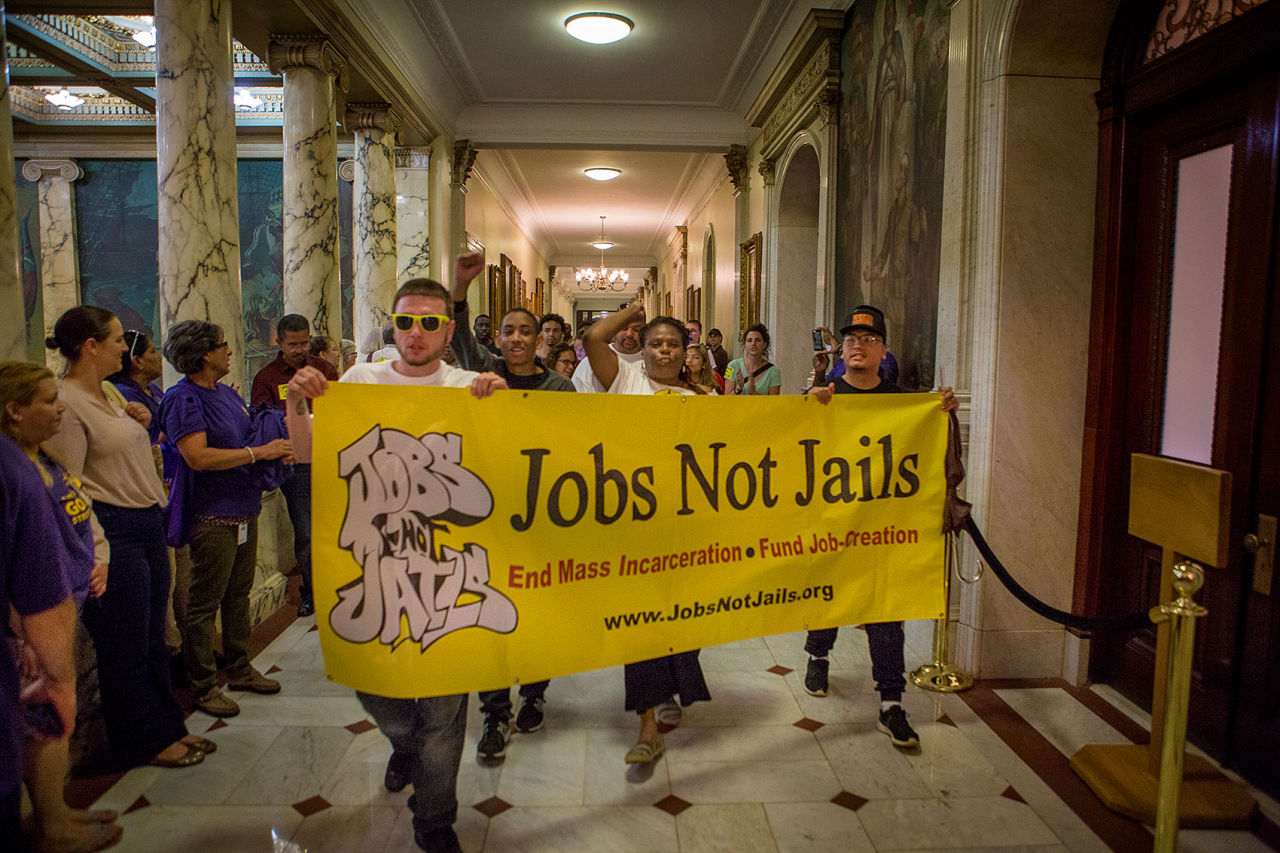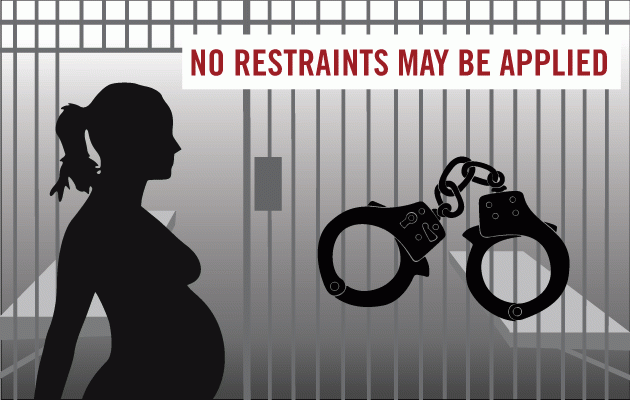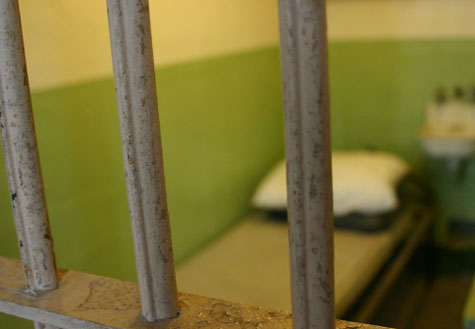On Tuesday, June 9th, more than 500 people filled Gardner Auditorium at the
Massachusetts State House to listen to testimony and speak out about mandatory minimum sentencing (man.min.) and bail reform. The hearing, in front of the Joint Committee on the Judiciary, lasted more than eight hours—and at 9:15 p.m. there were still some hardy souls to hear and give testimony although only three committee members stayed til the bitter end. There were so many who flocked the State House that guards weren’t letting them in, as they cautioned Steve O’Neill from Ex-Prisoners and Prisoners Organizing for Community Advancement,”There are way more than 600 people in there.”
 By far, most attendees were there to decry the injustices in our system including egregious long sentences for drug crimes, and punishment for those not yet tried who have suffered the indignity of incarceration because they could not afford bail. The bills most discussed were: S.786 & H.1620, An Act to eliminate mandatory minimum sentences related to drug offenses; S.64 & H.1429 An Act to increase neighborhood safety and opportunity; and S.802 & H.1584, An Act reforming pretrial process.
By far, most attendees were there to decry the injustices in our system including egregious long sentences for drug crimes, and punishment for those not yet tried who have suffered the indignity of incarceration because they could not afford bail. The bills most discussed were: S.786 & H.1620, An Act to eliminate mandatory minimum sentences related to drug offenses; S.64 & H.1429 An Act to increase neighborhood safety and opportunity; and S.802 & H.1584, An Act reforming pretrial process.
The bills were heard before thirteen legislators led by Senator William Brownsberger and Representative John V. Fernandes, who listened and asked questions, and took submitted written testimony. Their charge is to vote bills out of committee—or not—and so the hearings are an opportunity for the public to be heard.
Chief Justice of the Massachusetts Supreme Judicial Court, Ralph Gants, was the first to testify and he spoke eloquently when he said that racial justice insists we reconsider the failed policy of mandatory minimum sentencing, or what he called “a one-size-fits-all approach.” This is what the #BlackLivesMatter movement has also made crystal clear: people of color get harsher sentences and are incarcerated with greater frequency than whites. Additionally, the drug kingpin and the drug courier may get the same sentences because of these laws, and taxpayers are feeling it, Gants added, saying our incarceration rate is now five times higher than it was in 1975 when our crime rate was not much different than it is today.
While Massachusetts is apparently 48th in the nation with our incarceration rate, as Representative Paul Heroux pointed out, it’s not exactly a prizewinner to be the best of the worst: the U.S. is the world’s leading jailer at 2.4 million people in prisons and jails. He also said that “Longer sentences do not reduce recidivism…We do not need mandatory minimums.”
Many others who attended the hearing also brought home important points about over-zealous incarceration. Barbara Dougan, director of Families Against Mandatory Minimums (FAMM), said dealers and addicts are not necessarily different groups of people.One FAMM member spoke passionately from first-hand experience with the “one-size-fits-all” approach. Bonnie DiToro was sentenced to an overly harsh 15-year mandatory minimum sentence for being in the next room during a drug deal. Michelle Collette submitted written testimony that she plea bargained for 7 years instead of receiving 15 to 20 for drug trafficking—in spite of getting clean while on bail and despite the judge believing her sentence was too stiff. She said, “What I did was wrong and I deserved to be punished. But we also need to ask: How much time? Mandatory minimum laws don’t let us ask that question.”
 Barbara Dougan, Learn to Cope founder Joanne Peterson, Bonnie DiToro, and Robert Harnais, President-Elect of the Massachusetts Bar Association.
Barbara Dougan, Learn to Cope founder Joanne Peterson, Bonnie DiToro, and Robert Harnais, President-Elect of the Massachusetts Bar Association.
The DAs attempted to lay out reasons why we should keep man.mins in Massachusetts, but it was surprising to hear how their information was vehemently contradicted by others. Suffolk County District Attorney Dan Conley who spoke most for the four men representing Massachusetts prosecutors, “I am opposed and we all are opposed to the elimination of mandatory minimum drug laws, because it is not a new idea for the future.” Embarrassingly, he said he questioned Judge Gants’s facts, made a bizarre reference to the growth of the “of-color population” (or “off color population,” as I heard it), said “public policy should not be based on academic theories,” and despite the outcry of the large number of people in the room, stated there was no “groundswell” for repealing mandatory minimums.
Senator Cynthia Creem nailed it when she refuted the DAs with this comment: “Why would you think giving discretion to prosecutors is fairer than giving discretion to judges?” She called their demand to keep man.min. “a power play.”
Retired Superior Court Judge Carol Ball added to that point when she asked “Who do we prefer to make sentencing policy?” meaning the judges or the district attorneys. Ball refuted the idea that “judges will willy nilly release people to the street” if they get discretion. Right now she sees lengthy warehousing in prisons with man.mins. and expressed the frustration that judges feel with a policy that still echoes the tough on crime era: everyone remembers former Governor William Weld’s admonition that prisoners should be introduced to the “joys of busting rocks.”
Anthony Benedetti, chief counsel for the Committee for Public Counsel Services, pointed out that 86 percent of Massachusetts residents “strongly support or somewhat support” giving judges more discretion in the courtroom to impose sentences that they feel fits the crime. Matthew Segal, legal director of the Massachusetts ACLU, said “The one constant has been that mandatory minimum sentences never distinguish serious offenses from minor ones.” A panel of Massachusetts sheriffs also strongly favored getting rid of man.mins. and/or supported bail reform. Former prosecutor Dylan Hayre said he acted as both judge and jury when he used mandatory minimums as a lure to get the same sentence for two clients with radically different crimes. Rahsaan Hall, also former prosecutor and current Deputy Director of the Lawyers’ Committee for Civil Rights and Economic Justices, said in his work, he saw no deterrent effect with mandatory mimimums, and that the racial disparities he saw in his Suffolk County prosecutions “defied a reasonable explanation.”
 Prior to the hearing, activists from Jobs Not Jails flanked the halls and marched through the State House to bring attention to the waste of money and resources spent incarcerating rather than helping people find jobs, get treatment, and stay in their communities. Members, including community builders, religious leaders and those from labor unions, as well as formerly incarcerated men and women, also testified against unjust sentencing laws.
Prior to the hearing, activists from Jobs Not Jails flanked the halls and marched through the State House to bring attention to the waste of money and resources spent incarcerating rather than helping people find jobs, get treatment, and stay in their communities. Members, including community builders, religious leaders and those from labor unions, as well as formerly incarcerated men and women, also testified against unjust sentencing laws.
The day on social media was packed with the necessity of de-incarceration and the truth that a distinction between a so-called “non violent offender” and “violent criminal” is often a false one: as several people tweeted when listening to men and women who have turned their lives around. My thought, especially when the DAs were talking: a violent act does not a violent person forever make. Rep. Mary S. Keefe, flanked with Rep. Ben Swan and Sen. Sonia Chang-Diaz, others who filed legislation with Keefe, disputed the panel of DAs: “Drug traffickers are clearly not the violent people we say they are.”
In testimony for bail reform, Sen. Kenneth J. Donnelly, surrounded by members of the Harm Reduction Caucus of the Legislature, forcefully said “The pretrial system is dysfunctional.” He called for “risk assessment” to determine dangerousness, “a limitation on the use of cash bail,” and creation of pretrial services. Rep. Thomas Sannicandro also spoke for bail reform saying that it is certainly an important way to reduce our prison population.
Massachusetts Probation Chief Edward Dolan spoke out for bail reform and wants pretrial services to become a division under the probation department. There is some controversy among advocates about the wisdom of putting those who have not been found guilty under the supervision of a department that works with convicted persons.
A number of articles have recently appeared about bail reform and some have solutions that legislators might take into consideration. The New York Times detailed how when bail is out of reach, other costs mount. A federal court in St. Louis recently ended the practice of cash bail for all residents of a St. Louis county. Per an article in Think Progress about the St. Louis ruling, “In strong, sweeping language, the agreement declares, ‘No person may, consistent with the Equal Protection Clause of the Fourteenth Amendment to the United States Constitution, be held in custody after an arrest because the person is too poor to post a monetary bond.'” The burden of bail is elegantly detailed in this video, and comedian, John Oliver, skewers the US system of money bail in this HBO clip. Last year for Boston Magazine online, I wrote about our addiction to bail jails. Recently, an important article from the Federal Reserve Bank of Boston showed how one is guilty until proven innocent with bail.
Norma Wassel, a member of the Massachusetts chapter of the National Association of Social Workers, said that “We continue to be a state that maintains a dual system of justice, one for the poor and one for those with money.” She noted the Missouri decision said “cash bail is unnecessary.” She wants to make sure pretrial detainees are dealt with separately from convicted prisoners” i.e. not treated as already guilty of a crime. She referred the committee to a report written by Tim Schnacke of the Center for Legal and Evidence-Based Practices that lays out the similarities and differences in pretrial release and probation.
The best quote I’ve found on why we need to reform bail came from a recent tweet from the New York Times, and this quote also points to why we need new ideas in Massachusetts. Our current practice of bail?


![[ File # csp3134430, License # 2859884 ] Licensed through http://www.canstockphoto.com in accordance with the End User License Agreement (http://www.canstockphoto.com/legal.php) (c) Can Stock Photo Inc. / tritooth](http://jeantrounstine.com/wp-content/uploads/2015/05/House-Arrest-Home-Confinement-Electtronic-Monitoring-e1432597995909.jpg)




